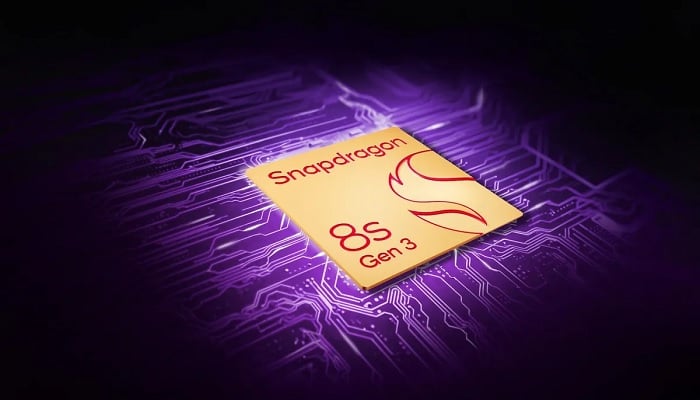
Qualcomm has recently unveiled the Snapdragon 8S Gen 3, a new addition to its mobile chip lineup, designed to bring high-end features, including on-device generative AI, to more budget-friendly smartphones.
This launch follows the late last year's debut of the Snapdragon 8 Gen 3, Qualcomm's first chip with built-in generative AI, intended for 2024's premium Android phones.
The Snapdragon 8S Gen 3 stands as Qualcomm's inaugural "S" series chip, offering a more cost-effective solution for generative AI technology. Positioned as an intermediary between the flagship Snapdragon 8 Gen 3 and the previous year's Snapdragon 8 Gen 2, which powered high-end Android devices, the 8S Gen 3 is aimed at smartphones in the mid-tier price range of $500 to $800.
Brands like Xiaomi, Honor, Realme, and Redmi are expected to launch phones powered by this chip in the coming months.
Unlike the Snapdragon 8 Gen 3, which powers high-end models such as the Samsung Galaxy S24 series and the OnePlus 12 — priced above $800 — the 8S Gen 3 targets the more affordable sector. Qualcomm's initiative with this chip is to make advanced features like generative AI more accessible.
The 8S Gen 3 supports 30 AI models, including those from Meta and Google, and boasts over 10 billion AI parameters, mirroring the capabilities of the Snapdragon 8 Gen 3. It offers AI-driven functions like enhanced voice assistants and image generation using stable diffusion.
However, compared to the Snapdragon 8 Gen 3, the 8S Gen 3 presents a slight downgrade in AI performance, lacking some high-end features like Fast Stable Diffusion and Speculative Decoding. It also has lower core processor speeds and doesn’t include some of the premium components found in Qualcomm’s flagship chips.
While it’s equipped with an X70 modem, not as advanced as the X75 in the 8 Gen 3, it still supports features like Snapdragon Satellite and Snapdragon Seamless.
In addition to AI capabilities, the 8S Gen 3 supports other high-end features, such as compatibility with 200-megapixel cameras and ray tracing for gaming. This makes it an appealing option for brands looking to offer updated, affordable smartphones with premium features.
For instance, the Samsung Galaxy S24 FE, priced between $500 and $800, could opt for the Snapdragon 8S Gen 3 over older models like the Snapdragon 8 Gen 1 used in last year’s Samsung Galaxy S23 FE.
The Snapdragon 8S Gen 3 joins a growing list of mobile processors featuring on-device generative AI, a trend that includes MediaTek’s Dimensity 9300 and 8300. While the market is yet to see groundbreaking AI-driven functionalities, these advancements could provide a competitive edge for premium Android smartphones.















